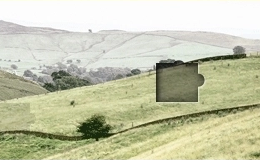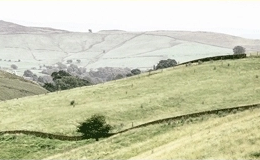1.基于图片对比计算缺口位置


# -*- coding: utf-8 -*-
from PIL import Image
class SlideCrack(object):
def __init__(self, gap_img, bg):
self.gap_img = gap_img
self.bg = bg
@staticmethod
def pixel_is_equal(image1, image2, x, y):
"""
判断两张图片的像素是否相等,不想等即为缺口位置
:param image1:
:param image2:
:param x: x坐标
:param y: y 坐标
:return:
"""
# 取两个图片的像素点
pixel1 = image1.load()[x, y]
pixel2 = image2.load()[x, y]
threshold = 60 # 像素色差
if abs(pixel1[0]-pixel2[0]) < threshold and abs(pixel1[1]-pixel2[1]) < threshold and abs(pixel1[2]-pixel2[2]) <threshold:
return True
else:
return False
def get_gap(self, image1, image2):
"""
获取缺口位置
:param image1:完整图片
:param image2: 带缺口的图片
:return:
"""
left = 60 # 设置一个起始量,因为验证码一般不可能在左边,加快识别速度
for i in range(left, image1.size[0]):
for j in range(image1.size[1]):
if not self.pixel_is_equal(image1, image2, i, j):
left = i
return left
return left
def run(self):
image1 = Image.open(self.bg)
image2 = Image.open(self.gap_img)
# 获取缺口的位置
gap = self.get_gap(image1, image2)
print(gap)
if __name__ == "__main__":
img1 = "img/1_1.png" # 带缺口的背景图
img2 = "img/1_2.png" # 不带缺口的背景图
gt = SlideCrack(img1, img2)
gt.run()
2.基于边界对比计算缺口位置



# -*- coding: utf-8 -*-
import cv2
class SlideCrack(object):
def __init__(self, gap, bg, out):
"""
init code
:param gap: 缺口图片
:param bg: 背景图片
:param out: 输出图片
"""
self.gap = gap
self.bg = bg
self.out = out
@staticmethod
def clear_white(img):
# 清除图片的空白区域,这里主要清除滑块的空白
img = cv2.imread(img)
rows, cols, channel = img.shape
min_x = 255
min_y = 255
max_x = 0
max_y = 0
for x in range(1, rows):
for y in range(1, cols):
t = set(img[x, y])
if len(t) >= 2:
if x <= min_x:
min_x = x
elif x >= max_x:
max_x = x
if y <= min_y:
min_y = y
elif y >= max_y:
max_y = y
img1 = img[min_x:max_x, min_y: max_y]
return img1
def template_match(self, tpl, target):
th, tw = tpl.shape[:2]
result = cv2.matchTemplate(target, tpl, cv2.TM_CCOEFF_NORMED)
# 寻找矩阵(一维数组当作向量,用Mat定义) 中最小值和最大值的位置
min_val, max_val, min_loc, max_loc = cv2.minMaxLoc(result)
tl = max_loc
br = (tl[0] + tw, tl[1] + th)
# 绘制矩形边框,将匹配区域标注出来
# target:目标图像
# tl:矩形定点
# br:矩形的宽高
# (0,0,255):矩形边框颜色
# 1:矩形边框大小
cv2.rectangle(target, tl, br, (0, 0, 255), 2)
cv2.imwrite(self.out, target)
return tl[0]
@staticmethod
def image_edge_detection(img):
edges = cv2.Canny(img, 100, 200)
return edges
def discern(self):
img1 = self.clear_white(self.gap)
img1 = cv2.cvtColor(img1, cv2.COLOR_RGB2GRAY)
slide = self.image_edge_detection(img1)
back = cv2.imread(self.bg, 0)
back = self.image_edge_detection(back)
slide_pic = cv2.cvtColor(slide, cv2.COLOR_GRAY2RGB)
back_pic = cv2.cvtColor(back, cv2.COLOR_GRAY2RGB)
x = self.template_match(slide_pic, back_pic)
# 输出横坐标, 即 滑块在图片上的位置
print(x)
if __name__ == "__main__":
# 滑块图片
image1 = "img/1_1.png"
# 背景图片
image2 = "img/1_2.png"
# 处理结果图片,用红线标注
image3 = "img/1_3.png"
sc = SlideCrack(image1, image2, image3)
sc.discern()


